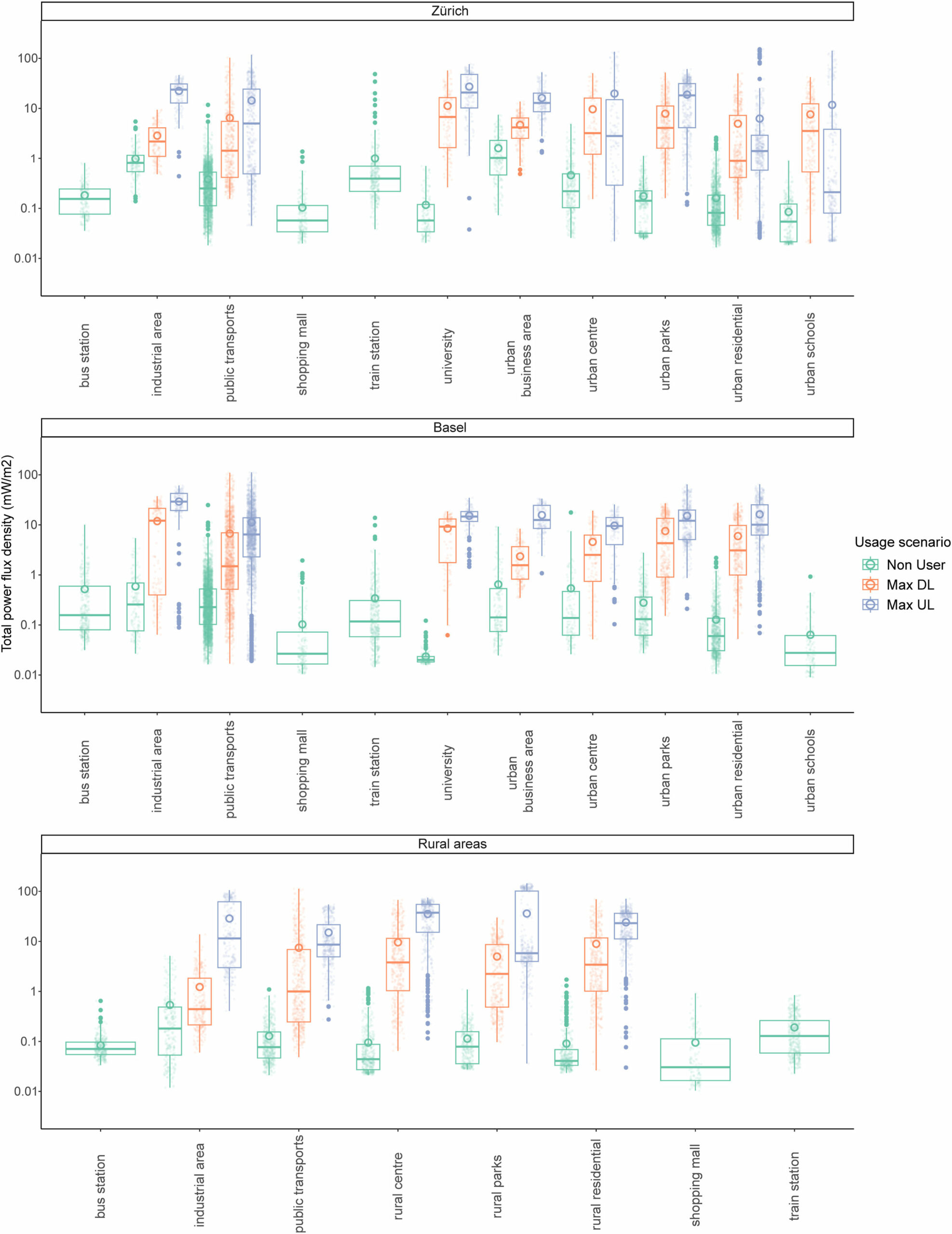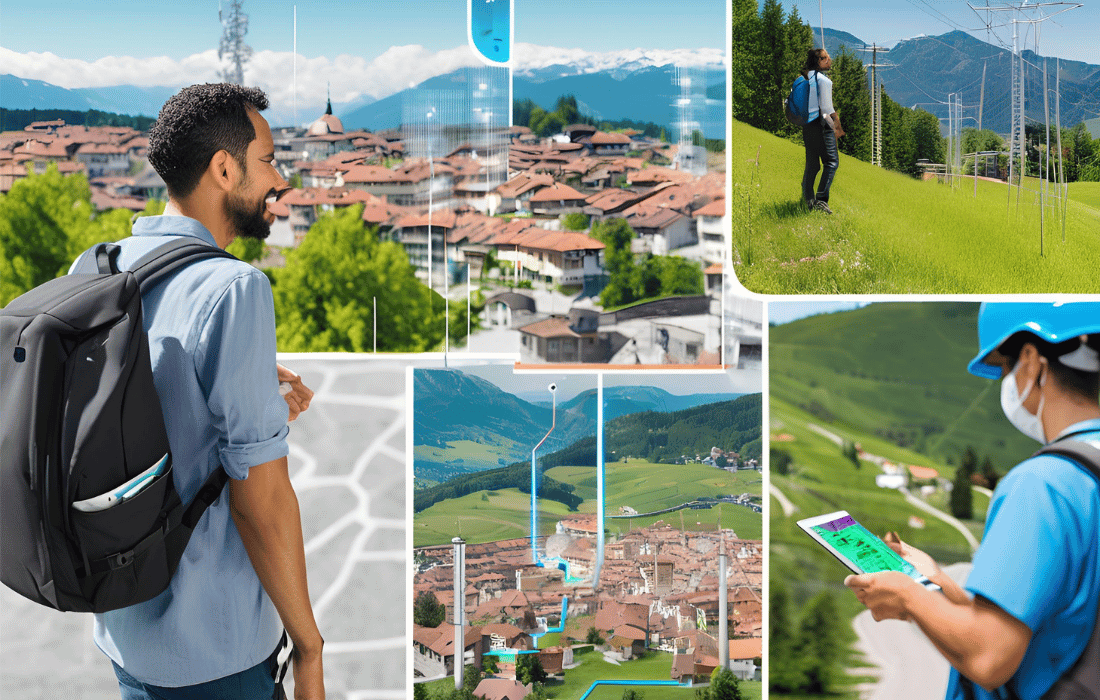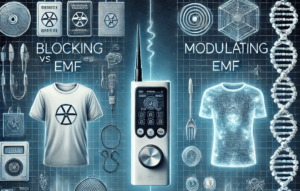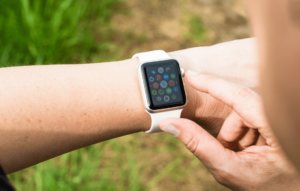The rollout of 5G technology promised faster internet speeds, lower latency, and a more connected world. However, beyond the excitement, researchers have raised important questions about how 5G radiation may impact public health.
A team from the Barcelona Institute for Global Health, in collaboration with the Swiss TPH and Project GOLIAT, has released groundbreaking findings on real-world 5G radiation exposure. This article will explore these findings with a professional and comprehensive approach, helping readers make informed decisions based on the latest evidence.
How 5G Exposure Was Measured
Rather than relying on laboratory simulations, researchers conducted an ambitious field study, measuring radiation exposure across multiple environments in Switzerland. Researchers outfitted themselves with backpacks equipped with sophisticated exposimeters (ExpoM-RF 4) and mobile devices fitted with broadband RF-EMF sensors.
They analyzed three major usage scenarios:
Non-user mode: Phones placed in airplane mode to measure only environmental radiation from base stations.
Max download mode: Devices set to continuously download large files to simulate heavy data reception.
Max upload mode: Devices set to continuously upload large files to simulate heavy data transmission.
Each scenario was designed to represent realistic but extreme patterns of mobile phone use, offering valuable insights into the different sources and intensities of radiation exposure.
Locations and Microenvironments
The study covered diverse geographic areas, including:
Urban centers: Zurich and Basel
Rural villages: Hergiswil, Willisau, Dagmersellen
Microenvironments included residential areas, business districts, parks, industrial zones, public transportation hubs, schools, universities, and shopping malls. In total, researchers collected over 30,000 data points, creating one of the most extensive real-world 5G exposure datasets to date.
Key Findings: What the Data Revealed
The study’s core findings reveal how 5G radiation exposure shifts significantly depending on device use, network conditions, and geographic location. These insights challenge assumptions about where the highest risks lie, especially as they show that personal device activity often contributes more to overall exposure than ambient environmental sources.

1. Environmental Radiation (Non-User Mode)
Baseline measurements in flight mode showed the following averages:
Zurich: 0.48 mW/m²
Basel: 0.33 mW/m²
Rural Villages: 0.17 mW/m²
These exposure levels, while significantly below ICNIRP guideline limits, were consistently higher in dense urban areas compared to rural locations. Urban centers with numerous base stations unsurprisingly created greater ambient exposure.
2. Increased Exposure During Data Transfers
When mobile phones actively transmitted or received data, exposure levels rose dramatically:
Max download scenario: Exposure jumped to an average of 6–7 mW/m².
Max upload scenario: Exposure soared even higher, averaging 16 mW/m² in cities and 29 mW/m² in rural areas.
Interestingly, the upload scenario generated the highest exposure levels. In rural areas, devices worked harder to maintain connections with distant towers, substantially increasing radiation emissions.
3. The Role of Beamforming
5G networks employ a technology known as beamforming, where base stations direct a concentrated signal beam toward the user’s device. This technique improves speed and efficiency but significantly raises localized radiation exposure during active data use, particularly in urban areas with 3.5 GHz 5G deployment.
Detailed Analysis of Frequency Bands
To better understand what’s behind the shifts in exposure levels during different phone activities, the study breaks down which frequency bands are doing the heavy lifting. This section highlights the two main culprits—3.5 GHz and 2.1 GHz—and explains how they contribute differently based on location and data use patterns.
3.5 GHz Band (Beamforming and 5G Data)
Predominant source of exposure during heavy downloads.
Signals are highly directional and dynamic, following the user’s movements.
2.1 GHz Band (Mobile Uploads)
Main source of exposure during uploads, especially in rural environments.
Higher output required in areas with weaker base station signals.
These findings are important because mid-band frequencies like 3.5 GHz and 2.1 GHz have different tissue penetration properties compared to lower or higher frequency bands.

Implications for Public Health Policy
The findings from the Swiss study highlight the growing need for regulatory bodies to reassess outdated standards for RF-EMF exposure. Current international guidelines, such as those issued by ICNIRP, still focus largely on thermal effects, overlooking mounting concerns about long-term biological consequences.
1. Legal and Grassroots Pushback
Lawsuits against the FCC: Organizations like Children’s Health Defense, led by Robert F. Kennedy Jr., successfully challenged the FCC in court for failing to reevaluate safety standards last updated in 1996. The ruling acknowledged the oversight, but progress has since stalled.
MAHA movement and community resistance: The Make America Healthy Again (MAHA) movement has taken a stand against 5G tower placement near schools and homes. Across the U.S. and Europe, cities have seen a surge in community activism and even legal challenges aimed at halting unconsulted 5G rollouts.
2. Policy Recommendations
To ensure the responsible implementation of 5G technology, public health policy should prioritize:
Precautionary regulations: Restricting tower installations near schools, playgrounds, and high-density residential areas.
Transparent exposure monitoring: Making real-time radiation exposure data available to the public.
Funding for independent research: Supporting epidemiological and toxicological studies that investigate chronic low-level RF-EMF exposure.
Modernized safety standards: Updating exposure limits to reflect the current science, including the cumulative effect of both environmental and self-induced radiation.
As 5G networks proliferate, policymakers must balance technological progress with the responsibility to protect public health. The absence of updated regulations in light of emerging research is no longer a neutral stance—it’s a risk.
Practical Strategies for Reducing 5G Radiation Exposure
While we can’t live entirely without wireless technology, there are realistic steps we can take to reduce our daily exposure to 5G radiation. This section offers science-backed, easy-to-implement strategies to help minimize risk without disconnecting from modern life.
1. Keep Your Distance
Use speakerphone or wired headsets.
Avoid carrying your phone directly against your body, especially in pockets or bras.
2. Optimize Signal Strength
Conduct large uploads or downloads in areas with strong signal coverage.
Weak signals force phones to emit higher radiation levels.
3. Use Airplane Mode
When not actively using your device, switch to flight mode to minimize unnecessary radiation emissions.
Especially important during sleep and while traveling.
4. Limit Data-Intensive Activities
Turn off automatic app updates and cloud backup services unless connected to a strong Wi-Fi network.
Stream videos and upload photos thoughtfully.
5. Invest in EMF Protection
Aires EMF protection devices offer an extra layer of defense by reducing exposure without compromising connectivity. Aires uses patented microprocessor technology to neutralize and restructure electromagnetic fields, helping make them less biologically disruptive.
Aires: Targeted EMF Protection for the Modern World
While reducing exposure through behavior change is a crucial first step, targeted technologies can also play a powerful role in EMF mitigation. Aires, a science-backed company at the forefront of EMF protection, offers innovative devices that are specifically designed to neutralize and restructure the radiation emitted by wireless devices. Their patented microprocessor technology helps make electromagnetic fields less biologically disruptive, offering peace of mind to those concerned about chronic low-level exposure.
Whether you’re using a phone, laptop, or surrounded by smart devices, Aires’ products provide a modern solution for today’s high-frequency world.
Proven Health Effects of EMF Exposure
While the Swiss study focuses on exposure measurement, a broader body of scientific literature has explored potential health impacts of long-term RF-EMF exposure, including 5G. Here’s a high-level summary of the most consistently documented effects:
Oxidative Stress and DNA Damage: Numerous studies have shown that prolonged EMF exposure increases reactive oxygen species (ROS) production, potentially leading to DNA strand breaks and mitochondrial dysfunction.
Neurodevelopmental and Cognitive Impacts: Evidence suggests that EMF exposure, especially in children, may be linked to changes in memory, attention, and behavior due to its influence on calcium ion channels and neurotransmitter balance.
Sleep Disruption and Melatonin Suppression: EMFs have been shown to alter melatonin production, disrupt circadian rhythms, and degrade sleep quality.
Fertility and Hormonal Disruption: Multiple studies report reduced sperm motility, hormonal imbalances, and endocrine disruption with chronic RF-EMF exposure.
Blood-Brain Barrier Permeability: EMF exposure has been shown to increase permeability of the blood-brain barrier, potentially allowing harmful substances to reach neural tissue.
Electrohypersensitivity (EHS): Though still debated, increasing reports and preliminary studies suggest that some individuals may develop a sensitivity to EMFs, resulting in symptoms like headaches, fatigue, skin irritation, and cognitive disturbances.
These findings come from diverse sources, including peer-reviewed epidemiological studies, animal models, and clinical observations.
Major Sources of EMF in Daily Life
While 5G is the most recent advancement, it’s just one part of the larger electromagnetic exposure landscape:
Smartphones and Tablets: Especially during active data transmission (calls, uploads, downloads).
Wi-Fi Routers and Extenders: Constantly emit low-level RF-EMFs, especially in homes and schools.
Bluetooth Devices: Earbuds, wearables, and keyboards contribute to near-field exposure.
Smart Meters and IoT Devices: These create persistent low-dose RF emissions in homes and neighborhoods.
Cell Towers and Small Cells: Installed near homes, schools, and on streetlights to support 4G and 5G networks.
Laptops and Smart TVs: Emit both RF and ELF (extremely low frequency) EMFs, particularly when connected to Wi-Fi or Bluetooth.
Reducing total EMF load means looking beyond just 5G and considering the cumulative impact of multiple exposure sources.
Future Research Directions
The GOLIAT project is extending these measurements to nine additional European countries. This broader dataset will help:
Compare exposure patterns across different regions.
Refine health risk models.
Inform better policy and risk communication strategies.
Conclusion: A Balanced Perspective on 5G Exposure
5G technology offers undeniable benefits in terms of connectivity and innovation. However, it also introduces new complexities in electromagnetic field exposure.
The Swiss study provides critical insights: while environmental exposure from base stations remains relatively low, personal device emissions—especially during active data transfers—can significantly elevate overall radiation exposure, particularly in rural areas.
Taking proactive measures to manage personal exposure is a prudent strategy. As research evolves, continued vigilance and thoughtful technology use will be essential for safeguarding public health in the digital age.

























